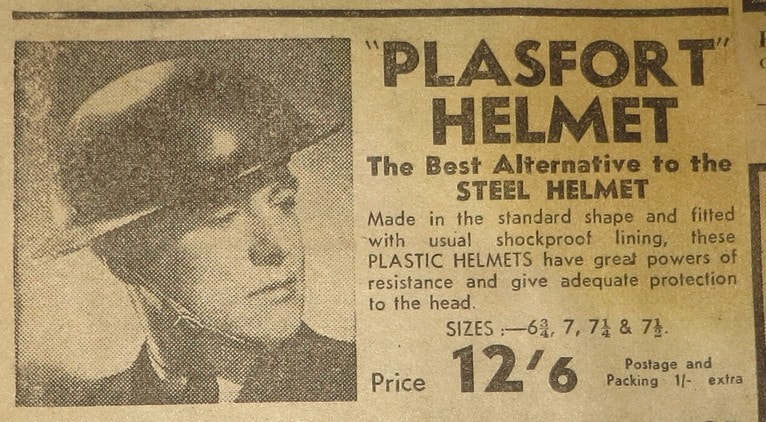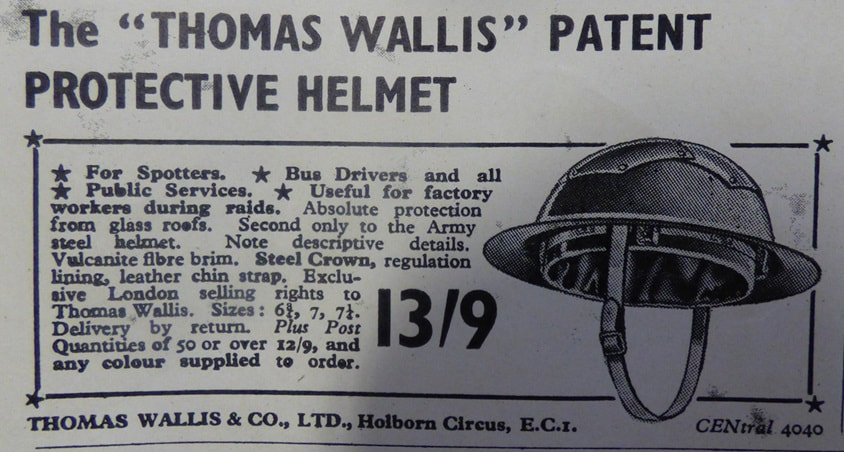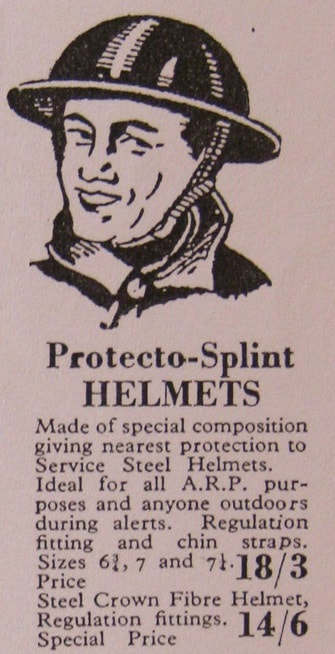|
Guest blogger Adrian Blake asks a question about non-metal Home Front helmets. For nearly fifty years, I’ve been often told that non-metal Tommy-style helmets were specifically made for use in armaments factories. This is heard along the lines of ”they don’t spark you see” and were therefore safe to wear when working with explosives. The basis of this myth is this: if you were wearing your helmet when filling a large calibre shell, and your helmet somehow managed to fall off, and said helmet somehow managed to strike something metal and then send a spark from that strike into the explosive…you get the idea. I’ve met so many people who have been told by someone whose grandparents told them this story, but that’s not proof, it’s hearsay. The armaments factory slash non-metal helmet myth is now an oft-repeated mantra. So, the case is closed... or is it? Now, non-metal helmets were available in the early years of the Second World War such as the “Plasfort” or “Cromwell”. These brand names have become synonymous with almost any non-metal helmet of the period. For years I have been looking for proof that non-metal helmets were made specifically for the ordnance industries. However, to date, I’ve not seen any documents to support this claim.
The best I can say to support the argument is that it’s highly likely that non-metal helmets did find their way into hundreds of factories and that some of the factories may have been responsible for weapons manufacture. I’ve not yet found a single government memo or bulletin insisting that all workers must wear a non-metal helmet (be it plastic-, paper-, wood chip- or rag pulp-based). Let’s assume, for a moment, that the government didn’t commission any companies to manufacture non-metal helmets. Is it possible that several companies simply saw a gap in the market and decided to fill it? After Dunkirk, Britain had to use metal wisely to rebuild the Army and as a result, the government stopped all commercial sales of metal helmets to the public. Up to this point, anyone could have popped into a shop and bought themselves a tin helmet. Entrepreneurial firms were looking for uses for new materials and these ranged from Bakelite and other new plastics to what seemed to some like paper-mâché (wastepaper pulp mixed with glue and other additives). As a result, several Tommy-shaped head-protectors hit the market – some had product names like Plasfort and Cromwell whilst others are now unattributable to a specific manufacturer as they are completely unmarked. Advertisements were placed in newspapers and magazines stressing the strength and lightness of these new wonder materials and assuring buyers that the helmets could be easily decontaminated. But if non-conductivity and anti-sparking were key features of these exciting new products, that simply wasn’t being covered in the adverts. I’ve yet to see a single advert mention this. I’m beginning to wonder if non-metal helmets were just helmets for anyone and everyone. Manufacturers saw a market opportunity; they had products that they were constantly looking for extra applications for; they wanted additional income streams; and they had to take into consideration government sanctions. Surely, if the non-sparking helmet was a thing we’d see adverts for the new “Sparko-Stop” helmet or the exciting new “Anti-Electro-Helmet” wouldn’t we? I’ve seen period photographs of plastic helmets worn by smiling factory workers. But also by repair party workers, milkmen, shopkeepers even children but I’m keen to prove or disprove the myth behind these being primarily for ordnance workers. But who’s spreading and reinforcing this myth? I’m afraid it appears to be us: the collectors, the re-enactors, the dealers, the online sellers, the amateur historians. So there must be proof right? Why are we repeating this myth without evidence to support it? I think there’s a much more interesting fact-based narrative around these helmets than the current (unproven) non-sparking one. We know this was a period of new material development, we know these helmets were commercially-available items, we know they filled a gap when metal was scarce, we know how businesses work and we even know that Zuckerman helmets could have been made of plastic (there’s evidence of trials). So, there we go. If you have evidence (a document or an advert) to prove the myth behind the non-sparking helmet, please leave a comment. Please note: the leather Mark II-shaped helmet is a different kettle of fish altogether.
0 Comments
Your comment will be posted after it is approved.
Leave a Reply. |
Please support this website's running costs and keep it advert free
Categories
All
Archives
June 2024
|
|
|
Copyright © 2018–2024
|



 RSS Feed
RSS Feed